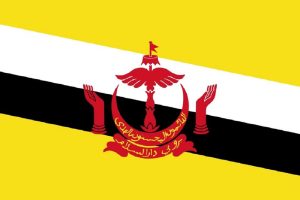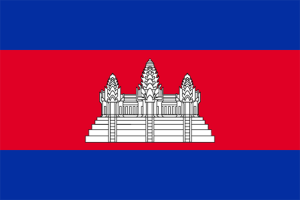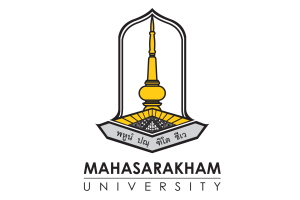Education and Research

Mahasarakham is located in the northeastern region of Thailand. Mahasarakham University offers undergraduate and graduate degrees in three academic groups: social sciences, pure and applied. and science and health sciences Its mission is to organize teaching and learning, aiming to produce graduates with quality standards, and research development. and innovation towards excellence, providing academic services to communities and society to enable communities and society to be self-reliant in a sustainable way and to conserve, restore, protect, disseminate and develop the arts, culture and traditions of Isaan.
In response to this growth, it covers the Khamriang campus area. There are approximately 3,617 staff and 47,344 students enrolled at this main campus. Mahasarakham University has 17 faculties and 2 colleges. By 2023, there will be 95 programs, with courses embedded in sustainability and courses with sustainability performance certificates as part of the 55 courses curriculum.
Researchers at MSU Invent Hot Air Oven for Academic Community Service Project

Researchers at MSU Invent Hot Air Oven for Academic Community Service Project
Researchers from Mahasarakham University (MSU) have invented a hot air oven for academic service in the community under a training project titled “Transfer of Knowledge on Hot Air Oven Technology to Entrepreneurs for Development and Enhancement” for the fiscal year 2024. This project aims to provide more options for consumers and improve convenience and longevity in food storage. The hot air oven was invented by Assoc.Prof. Kiattisin Kanjanawanishkul, lecturer in Mechatronics Engineering at the Faculty of Engineering, MSU, along with a research team with expertise in the project. The project is managed by the Research, Innovation, and International Relations Division, Faculty of Engineering, MSU.
Background of the Community Academic Service Project
One major issue with agricultural products is that when production is high it leads to market glut, where supply exceeds demand, causing prices to fall to a level where it’s no longer worth the investment. One solution is to process agricultural products to add value and extend their shelf life. Drying is a common method, which reduces moisture to prevent microbial growth and prolong preservation. Although solar drying is the most economical method, it is time-consuming and requires direct sunlight, making it weather dependent. Therefore, a hot air oven is advantageous as it saves time, is consistent at drying, and operates anywhere, anytime. Additionally, the temperature can be adjusted and maintained up to 90 degrees Celsius. The oven ensures clean drying without contamination from external pollutants, including flies and pests. This led the Research, Innovation, and International Relations Division to organize a project to inform entrepreneurs and farmers on hot air ovens in order to increase their income, strengthen their business, and serve as a foundation for future growth.
Why Choose to Provide Knowledge on Hot Air Ovens to the Community?
Currently entrepreneurs and farmer groups in the Khwao Rai subdistrict, Kosom Phisai, produce and sell fresh and frozen beef. However, to offer more choices to consumers and to provide more convenient and longer-lasting preservation, the entrepreneurs, along with the Research, Innovation, and International Relations Division, exchanged ideas and concluded that providing knowledge about hot air ovens to the entrepreneurs would be beneficial. This knowledge could be applied to drying beef, such as making sun-dried beef, thereby expanding the consumer base, making preservation more convenient, and extending shelf life of their produce.
How Does the Hot Air Oven Work?
The basic principle of the hot air oven is to use a heater to generate heat for the air inside the oven, and then use a fan to blow this hot air, ensuring it circulates evenly throughout the chamber. The hot air flows over the products that need to be dried, removing moisture and providing uniform temperature control during drying. The oven features a temperature sensor and controller, allowing users to set the desired temperature. The controller reads the temperature from the sensor and adjusts the heater’s operation to maintain the desired temperature. Additionally, there is a timer that users can set to ensure automatic shutoff once the drying is complete.
Features and Advantages of the Hot Air Oven
The oven can be used for a variety of products including vegetables, fruits, and meat. It operates continuously, reducing drying time compared to solar drying and eliminating dependence on weather conditions. Users can set temperatures between 40 to 90 degrees Celsius, with consistent temperature control throughout the process. The oven is designed for easy cleaning, with racks made of food-grade 304 stainless steel, and has a clear glass door for product visibility.
Challenges and Obstacles in Operation
The Research, Innovation, and International Relations Division has been organizing projects of this nature continuously. An important aspect is understanding the characteristics of the products that entrepreneurs wish to dry, the drying methods, and the entrepreneurs’ needs. For this project, there were no significant problems or obstacles and the entrepreneurs were very satisfied with the results achieved.
Future Development Opportunities for the Hot Air Oven
Future plans include reducing drying time, and using cameras or sensors to monitor the products and automatically adjust temperatures accordingly. This would help achieve appearances or characteristics that meet market or entrepreneur preferences.
How Can We Develop Stronger, More Self-Sufficient Communities?
Farmers in the community produce large quantities of agricultural products and have the potential to increase their output. However, fluctuating prices in sales channels lead to uncertain incomes for farmers. Therefore, “to increase farmers’ incomes, it is necessary to process agricultural products to create new products or flavors, thereby increasing the number of sales channels,” a larger consumer base, and longer shelf life. However, many farmers still lack the knowledge or equipment necessary for processing. Thus, bridging the gap between farmers and knowledge from the university is crucial. Therefore, the Faculty of Engineering is committed filling this gap in farmers’ knowledge by organizing informative projects on drying produce with hot air ovens, with the strong expectation that this will enable farmers to increase their income, expand their customer base, and continuously develop new products.
MSU Research and Development Unit for Smart City Solution (RDSC) Wins “Best Education Partner Award 2024”

MSU Research and Development Unit for Smart City Solution (RDSC) Wins “Best Education Partner Award 2024”
Assoc.Prof. Tarawut Boonlua, Head of the Research and Development Unit for Smart City Solution (RDSC) at the Faculty of Architecture, Urban Design and Creative Arts, MSU, represented the university in presenting academic achievements on “Development of a Digital Twin for the Management of Teaching and Learning to become Mahasarakham Smart University, Thailand” at the 2024 GEOSPATIAL INTELLIGENCE SOFTWARE TECHNOLOGY CONFERENCE. The event took place on June 25-26, 2024, at the China National Convention Center, Beijing.
On this occasion, the Faculty of Architecture, Urban Design, and Creative Arts, MSU, received the “Best Education Partner Award 2024” from SuperMap Software Co., Ltd., for the academic collaboration Memorandum of Understanding (MOU) between SuperMap Software Co., Ltd. and RDSC.
Source: Faculty of Architecture Urban Design and Creative Arts, MSU
Thai article: หน่วยวิจัยและพัฒนาสู่เมืองอัจฉริยะ (RDSC) มมส คว้ารางวัล Best Education Partner Award 2024























